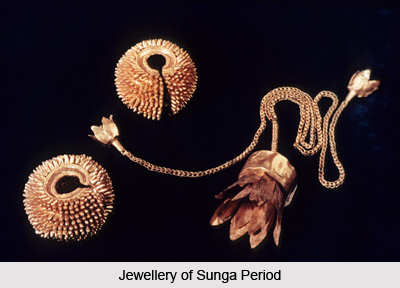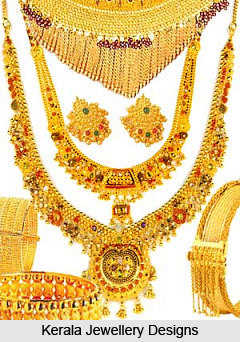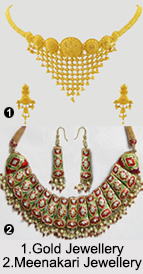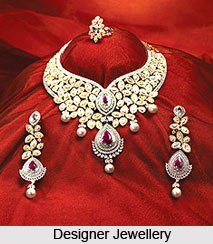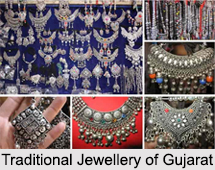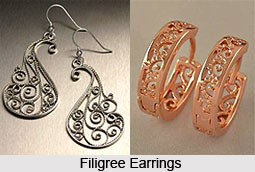 Filigree jewellery in India has always been in vogue owing to their intricate designs and elegant forms. This jewellery is adorned with filigree work which is usually done on silver and includes much technicality and precision. This art requires a sharp eye for minute details and a great deal of patience. Filigree jewellery in India dates back to the early centuries, however since ages this art has also gained popularity in countries like Spain, Italy and Egypt. Among the various countries where this art work is extensively practiced, Indian filigree owns a distinct repute for the uniqueness it renders in terms of aesthetics and genre. However Indian artisans have derived immense influences from Greek filigree work and exhibits similar style and an antique charm which prevailed ages ago. Indian states namely Andhra Pradesh and Odisha have garnered great recognition in producing some of the finest filigree jewelleries of India.
Filigree jewellery in India has always been in vogue owing to their intricate designs and elegant forms. This jewellery is adorned with filigree work which is usually done on silver and includes much technicality and precision. This art requires a sharp eye for minute details and a great deal of patience. Filigree jewellery in India dates back to the early centuries, however since ages this art has also gained popularity in countries like Spain, Italy and Egypt. Among the various countries where this art work is extensively practiced, Indian filigree owns a distinct repute for the uniqueness it renders in terms of aesthetics and genre. However Indian artisans have derived immense influences from Greek filigree work and exhibits similar style and an antique charm which prevailed ages ago. Indian states namely Andhra Pradesh and Odisha have garnered great recognition in producing some of the finest filigree jewelleries of India.
Procedure of Making Filigree Jewellery in India
Silver is mostly the chosen material for filigree as it is one of the most malleable and ductile metals. Making filigree jewellery is quite tedious and involves elaborate steps. For this firstly pure silver is converted into very thin wires. Before the advent of advance technology this was done either by hammering or by passing the silver through a wire drawing machine. Following this, the two thinnest wires are heated and then placed on a rotating wheel machine also known as `Charkha` to wind them around each other.
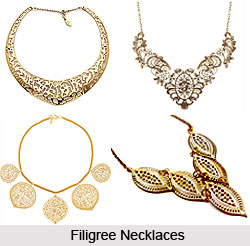 This structure is then once again flattened to form a single wire which is subsequently bent in different ways to form various shapes and forms. Nowadays the metal is firstly melted over a stove and then poured into moulds to form rods. These rods are then converted into fine wires by inserting them into manual wire drawing machines with smaller apertures. For rendering zigzag effect these wires are crimped in machines. These are also given various shapes like curls, spirals etc to form delicate web of silvers. The wires are heated to fuse them with each other, joining the ends.
This structure is then once again flattened to form a single wire which is subsequently bent in different ways to form various shapes and forms. Nowadays the metal is firstly melted over a stove and then poured into moulds to form rods. These rods are then converted into fine wires by inserting them into manual wire drawing machines with smaller apertures. For rendering zigzag effect these wires are crimped in machines. These are also given various shapes like curls, spirals etc to form delicate web of silvers. The wires are heated to fuse them with each other, joining the ends.
Features of Filigree Jewellery in India
Filigree jewellery in India has acquired a great fame in the state of Odisha where it is known as Tarkashi. In the filigree jewelleries of Odisha the figures of Konark Chakra, flowers, birds and animals are commonly depicted by the artisans as the favourite mementos of the region. Karimnagar district situated in Andhra Pradesh is also renowned for its refined approach, precise motifs and intricate designs. These specimens of art embellish artefacts like earrings, pendants, brooches, hairpins and many others. Delicate artistry and brilliant craftsmanship are the most prominent features of filigree jewellery. The art mainly prospered under the patronage of kings and Nawabs. Although it encountered a little downfall post independence it regained its popularity and charm all over the country later. Apart from jewellery, filigree art finds utility in various other artefacts such as tumblers, plates, showpieces, purses, vases with flowers, spoons, bowls, trays, boxes, incense containers, candle stands and many more



